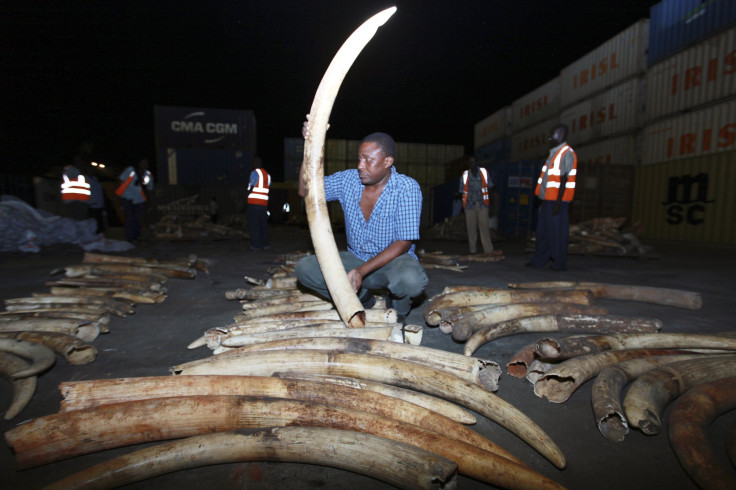Pure White Ivory For Asia Spurs Dirty, Dangerous Business In Africa

Ivory doesn’t serve much purpose for practical or industrial uses -- but for ornamentation, it is one of the most prized materials on earth. Dominoes and piano keys are only the beginning; ivory can also be carved into intricate figures, representing anything from religious icons to exotic animals to intricate cityscapes.
The market for ivory has exploded in recent years -- especially in Asia, where a pound of ivory can fetch about $1,000. But this demand has some serious consequences for communities that are thousands of miles away, where illegal elephant poaching has increased considerably.
“Ivory has become an artistic commodity. It’s classic gift between business partners in some areas of Asia -- sort of a revered material,” says George Wittemyer, an assistant professor of Fish, Wildlife and Conservation Biology at Colorado State University.
“The problem is that the price of ivory is now at extraordinarily high levels, so there’s an incredible economic incentive for illegal activity in Africa, where most ivory is harvested.”
Wittemyer is the lead author of a new study monitoring the decline of an elephant population in a remote region of Kenya. The research was conducted by Save the Elephants, a conservation organization based in the country.
The study, which spanned 14 years and focused on two national reserves in central Kenya, found that “the proportion of elephants that were illegally killed doubled in the last three years of the study. By 2011, 56 percent were dying at the hands of poachers.”
Asian countries -- especially China -- have ramped up their investments in Africa over the past few years, eager to power their own growth by taking advantage of the continent’s wealth of natural resources. The annual two-way exchange between China and African countries now exceeds $160 billion.
The growing trade relationship has helped spur progress on both continents. But when it comes to ivory, Africa is on the losing end of the deal.
The decline in elephant populations around the world is a serious problem, especially in Africa. According to the World Wildlife Fund, or WWF, there are about 450,000 elephants alive on the continent today, down from an estimated 1.3 million three decades ago.
But this is a human problem, too. A report last month from the WWF detailed the impacts of poaching on African societies, outlining the emergence of a serious threat to peace and development in various countries.
“Illicit wildlife trafficking compromises the security of countries,” said the report. “Much of the trade in illegal wildlife products is run by criminal groups with broad international reach, and the profits can be used to finance civil conflicts and terrorist-related activities. Illicit wildlife trafficking is also linked to other forms of illegal trafficking and money-laundering.”
Wittemyer points out that African organizations and communities have done excellent work over the past few years to combat this problem. In central Kenya, where the recent Save the Elephants study focused, Wittemyer pointed to the success of the Kenyan Wildlife Service, or KWS, in conjunction with various community-based organizations.
“The Kenyan Wildlife Service has been doing security work, and still continues to do it even with this increase in demand,” he said.
“Black market prices started increasing in 2007, and we had an increase in poaching that reached very bad levels in 2010 and 2011. But in 2012, the ability of the KWS to control it improved, so it’s sort of a cat-and-mouse game where poaching will flare up and the KWS will stamp it out.”
This isn’t the first time poaching has emerged as a serious threat -- the same thing happened during the 1970s and 80s, due to an upsurge in demand in highly developed countries like the United States and Japan.
Back then, the solution involved an increase in awareness: Ivory consumers had to be educated on the damaging effects of elephant poaching. Efforts to that end have largely been successful, and demand has dropped off significantly -- though not entirely -- in formerly lucrative markets. Now China and other countries, including Vietnam and Thailand, have emerged as new consumers, but Wittemyer is optimistic that the problem can be contained once again.
“Ultimately, it’s going to take a two-tiered approach: We have to reduce demand in Asia and work with African communities in order to help them make it more difficult to illegally harvest ivory,” he said.
“Solving this problem in the past took a huge amount of global recognition. We can do that again by applying pressure to make it socially repugnant to have ivory. And if that happens, history has shown that the problem can be solved.”
© Copyright IBTimes 2024. All rights reserved.












